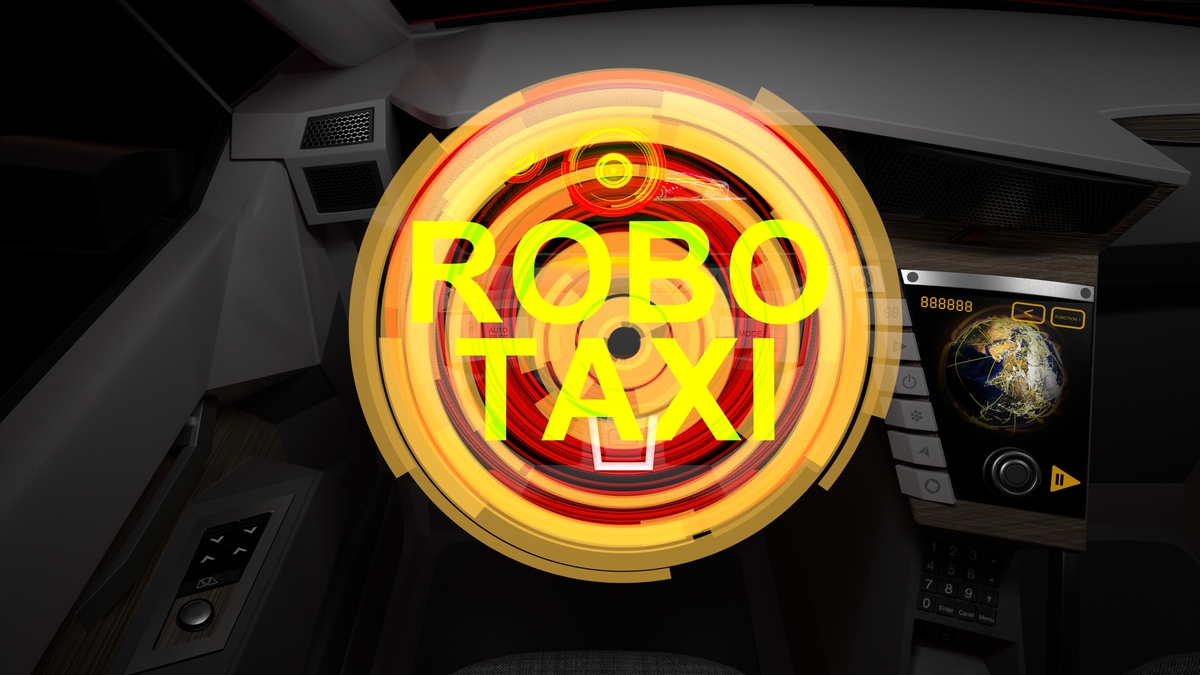
The ever-reliable Dan Ives, Wall Street’s celebrated analyst with a passion for the high-flying, believes that Tesla (TSLA) will ascend to a $2 trillion empire by 2026. Now, for those of us who aren’t in the habit of buying stocks based on the hope that a company will become more valuable than the entire GDP of some nations, a simple calculation reveals that this would mean a share price hovering around $627. That’s a solid 44% above Tesla’s closing price on September 22. The question then arises: Should you, an astute investor, pile into Tesla stock, hoping it will vault to unimaginable heights in just a year? Well, I would advise that you consider this venture only if you’re enthusiastically bullish about Tesla’s rather ambitious robotaxi plans. And even then, don’t break out the champagne just yet.
Robotaxis: The Dream of a $1 Trillion Future
Now, what is it that has ignited Ives’ unrestrained enthusiasm for Tesla’s stock? After years of pouring resources into autonomous driving technologies, Tesla has begun testing its robotaxi service in Austin, Texas. Ives himself had the fortune (or misfortune, depending on your perspective) of experiencing this nascent service. To quote him directly: “It was the future.” Well, we certainly hope so, considering the heavy investment in it. What’s more, he believes the autonomous vehicle market-specifically robotaxis-could be worth a tidy $1 trillion. This, he declares, marks the beginning of Tesla’s march toward a $2 trillion market cap within the next 12 to 18 months. Quite the bold proclamation. So, are we all supposed to applaud and rush to buy shares in a company that promises driverless taxis by next year? Perhaps. But let us not forget the fact that we have seen such promises before, many times over.
But let’s not be too cynical-there are others who share Ives’ optimism. Cathie Wood, a major Tesla shareholder, is all in, predicting that the robotaxi market could grow to a staggering $5 trillion to $10 trillion. Elon Musk himself has envisioned a world where “millions” of autonomous Teslas cruise down American streets by the end of next year. Ambitious, yes. Realistic? Well, that’s for time to tell. One thing is clear, though: The market appears to be buying into this future-or at least, buying Tesla stock at a premium price in the belief that this futuristic vision is a done deal.

Don’t Rush to Drink the Kool-Aid
But now, let’s slow down and ponder the crux of the matter. The problem with this glowing narrative is that the key proponents-Musk, Wood, and Ives-are not exactly renowned for their cautious, conservative predictions. In fact, they’re known for their ability to conjure visions of utopia out of thin air, much like the visionary leaders of past get-rich-quick schemes.
Let’s take Musk, for instance. This is the same man who has promised self-driving cars for nearly a decade, and yet, here we are, still waiting for them to arrive in any truly reliable form. The robotaxi service in Austin, which Ives lauds as a spectacular success, has had more than its share of hiccups, often requiring human intervention to correct the path of the supposedly “autonomous” vehicles. Not exactly the self-driving revolution Musk predicted, is it?
As for Cathie Wood, her track record on Tesla stock is one that could be generously described as “optimistic.” Back in 2019, she predicted Tesla stock would reach somewhere between $700 and $4,000 by 2024. The actual peak that year was $430. A small discrepancy, if you will.
And let us not forget Ives himself. Earlier this year, he slashed his price target for Tesla from $550 to $315, only to reverse course months later, as the stock price began to rebound. This volatility in predictions can hardly inspire confidence in his forecasts for Tesla’s future, can it?
Let’s take a step back and consider the more conservative views on the robotaxi market, the ones not shaped by Tesla’s exuberant executives or its die-hard investors. Market research firm Fortune Business Insights estimates that the global robotaxi market will be worth around $120 billion by 2031. Precedence Research expects a slightly more optimistic $190 billion by 2034. Even Goldman Sachs, the paragon of cautious forecasting, predicts that by 2030, the U.S. will have around 35,000 robotaxis generating $7 billion in annual revenue. These figures, while impressive, hardly align with the $5 trillion fantasy that some are spinning.
So, while Ives, Musk, and Wood may very well be correct about Tesla’s long-term potential, it would be wise for investors to temper their expectations. The future of robotaxis is undoubtedly exciting, but let’s not ignore the possibility that the road ahead may be bumpier-and longer-than predicted.
In the end, investing in Tesla is not unlike buying a ticket to a grand spectacle. There’s the thrill of the unknown, the promise of futuristic innovations, and the irresistible allure of the next big thing. But, as always, let’s not forget: every spectacle has its risks. Proceed with caution, and remember, the future is a slippery thing-especially when it’s wrapped in a shiny new electric vehicle.
🚗
Read More
- 39th Developer Notes: 2.5th Anniversary Update
- Shocking Split! Electric Coin Company Leaves Zcash Over Governance Row! 😲
- Celebs Slammed For Hyping Diversity While Casting Only Light-Skinned Leads
- Quentin Tarantino Reveals the Monty Python Scene That Made Him Sick
- Game of Thrones author George R. R. Martin’s starting point for Elden Ring evolved so drastically that Hidetaka Miyazaki reckons he’d be surprised how the open-world RPG turned out
- Gold Rate Forecast
- Here Are the Best TV Shows to Stream this Weekend on Hulu, Including ‘Fire Force’
- Thinking Before Acting: A Self-Reflective AI for Safer Autonomous Driving
- Celebs Who Got Canceled for Questioning Pronoun Policies on Set
- Ethereum Flips Netflix: Crypto Drama Beats Binge-Watching! 🎬💰
2025-09-24 15:18